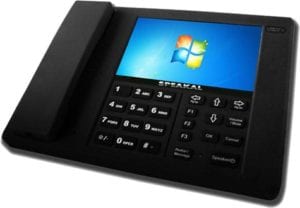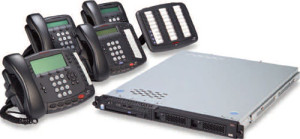
Many professions rely on transcribers. Lawyers use secretaries and paralegals. Doctors and dentists use professional transcribers to record diagnosis. News editors right the work of reporters on content and typographical errors. Among others are Novelists, Corporate Officers and Courts. Transcription has been seen by some as a “mundane” task that should be automated. There are, … Read more
Today I am pleased to announce the launch of the 5th major release of the DLS Hosted PBX. This release includes a number of significant enhancements to Queues, Faxing, Conferencing, Voicemail, Reporting, Call Routing, Predictive Dialer, and Interface Configuration. This release also includes some new features: LDAP Authentication, Multi-Tenant Support, and provisioning for Cisco 7945 … Read more
Today I am pleased to announce the launch of the 5th major release of the DLS Hosted PBX. This release includes a number of significant enhancements to Queues, Faxing, Conferencing, Voicemail, Reporting, Call Routing, Predictive Dialer, and Interface Configuration. This release also includes some new features: LDAP Authentication, Multi-Tenant Support, and provisioning for Cisco 7945 handset and Bria softphone.
Right now we’re starting to see a lot of convergence between mobile devices and desktop telephony equipment. Modern VoIP handsets are starting to stock up on functionality and applications that has, so far, been the sole domain of smartphones. This is true for touchscreens and app-compatible operating systems.
When you take the smartphone dynamics to desktop phones, you will notice an interesting trend.
 Microsoft’s next Windows operating system is going to interact seamlessly with Microsoft’s next generation of mobile OS. In fact, Windows 8’s mobile and desktop/laptop operating systems are doing more than merely “converging”. They will operate closer than just “seamlessly”. Windows for your computer is becoming the exact same OS as Windows for your next smartphone.
Microsoft’s next Windows operating system is going to interact seamlessly with Microsoft’s next generation of mobile OS. In fact, Windows 8’s mobile and desktop/laptop operating systems are doing more than merely “converging”. They will operate closer than just “seamlessly”. Windows for your computer is becoming the exact same OS as Windows for your next smartphone.
Provided, of course, you use a Windows phone for Unified Communications, which very, very, very few people do. But the relatively low popularity of Windows mobile devices needs to be taken alongside the continued popularity of Microsoft operating systems. Especially among the government and enterprise sets of users. Will the next generation of VoIP handsets run Windows 8?
Even if Microsoft went bankrupt next year the company’s decision to utilize the same operating system among desktop and mobile devices is highly telling about their vision of the future of communications technology. They envision the movement towards mobile competition including Apple and Google (owner of the popular Android mobile platform). Over the last year Apple has been steadily aligning their mobile and desktop operating systems by streamlining their desktop environment. Recently they began to establish uniform naming practices across for applications across their devices. Google, meanwhile, has been getting their feet wet in the world of desktop computers, ostensibly in response to the wild success of the company’s mobile efforts. There are presently several SIP handsets that run on Google’s Android.
 Right now the world of enterprise-level IP PBX stands in a pretty interesting state of flux, a good sign of which is HP’s July 2012 folding of their IP PBX division. Even if you weren’t an HP customer or even if you weren’t considering working with HP you should take this shift in power seriously for a couple of pretty significant reasons. The world of IP PBX is so fascinating and exciting right now that any big sea change like this seems to indicate a pretty significant picture of things to come.
Right now the world of enterprise-level IP PBX stands in a pretty interesting state of flux, a good sign of which is HP’s July 2012 folding of their IP PBX division. Even if you weren’t an HP customer or even if you weren’t considering working with HP you should take this shift in power seriously for a couple of pretty significant reasons. The world of IP PBX is so fascinating and exciting right now that any big sea change like this seems to indicate a pretty significant picture of things to come.
Release notes for DLS Hosted PBX 4.0a ( beta ) Feature Enhancements: Inbound call security enhancements. Switch Music on Hold format to wave for native playback. Attempt to convert uploaded Music on Hold and recordings to the correct format. Background images for Polycom 450, 550, 560, 650 , 670, and VVX1500 handsets. Supplied a link … Read more

Every year our development team establishes new goals aimed to improve our VoIP Service. For the DLS Hosted PBX this means a resolution to add a significant new feature. In 2012 we are looking to bring you a set of features which will allow you to control your phone system functions using your voice. We want you to be able to control calls, change your away or presence status, send and receive messages, page one (or more) people, set up instant 3-way conferences, and even inquire about the weather, the time, or the date.
To our Valued Customer: YOU are the real reason why we at DLS Internet are celebrating this Holiday Season. Thank you so much for letting us support your communications needs. We know that reliable network connectivity, feature rich VoIP Hosted PBX and other technology services we provide are important to your business. We couldn’t … Read more